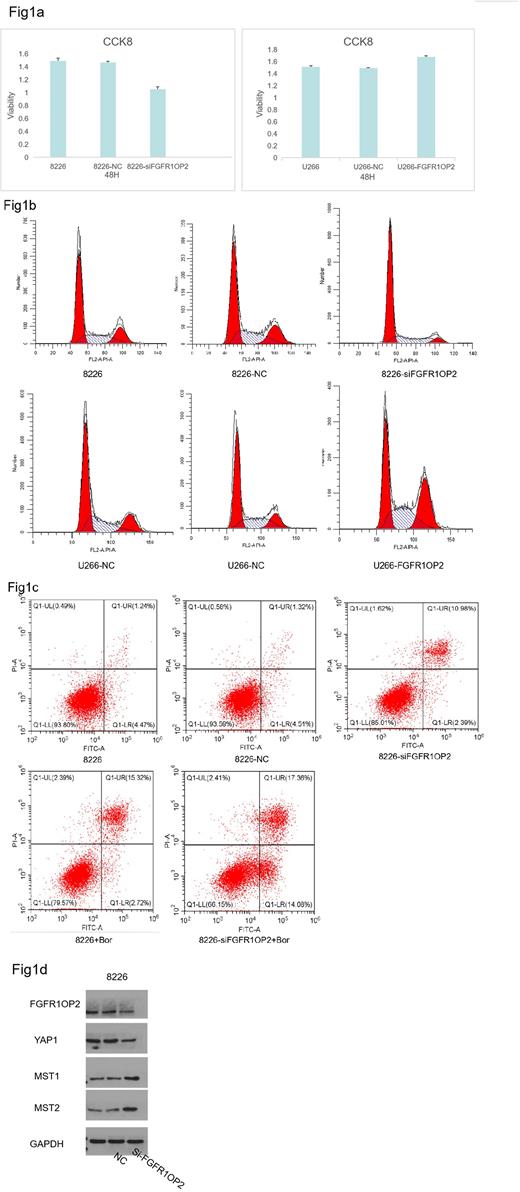Abstract
Background: Multiple myeloma (MM) is an incurable disease with high tendency to relapse and drug resistance. Exploring new targets and new drugs is crucial for treatment. Elevated expression of fibroblast growth factor receptor 1 oncogene partner 2 (FGFR1OP2) has been observed in relapsed and refractory MM and indicated the poor prognosis. FGFR1OP2 is expressed in diverse tissues, including bone marrow, spleen and thymus and might be a oncogene in lung cancer, acute leukemia. we hypothesize that FGFR1OP2 may exert effects in MM and will be a a potential therapeutic target.
Aims: To Investigate the functional role of FGFR1OP2 in MM
Methods: FGFR1OP2 knockdown and overexpression MM cell lines were generated. Molecular mechanism underlying was elucidated by qRT-PCR, Western Blot and gene expression microarray.
Results: To study whether FGFR1OP2 is important for MM, we found high expression of FGFR1OP2 in different myeloma cell lines which was validated by CCLE datasets. Knockdown the FGFR1OP2 in MM cells led to a decreased proliferation, while overexpression of FGFR1OP2 increased the cell growth (Fig.1a). Next, flow cytometry was performed to evaluate the cell cycle and apoptosis in MM cells. FGFR1OP2 suppression showed cell cycle arrest and overexpression accelerateed cell cycle progression (Fig.1b). Furthermore, Bortezomib(Bor)-induced apoptosis of MM cells was significantly increased when FGFR1OP2 expression was suppressed (Fig.1c). Moreover, results of Western Blot revealed increased levels of Bor-induced caspase-3 and cleaved PARP after FGFR1OP2 knockdown. Taken together these data indicate that FGFR1OP2 can increase MM cell growth and inhibit apoptosis. To better understand the molecular mechanism of FGFR1OP2, we performed gene expression microarray profiling and compared results from FGFR1OP2-knockdown cells and control cells. Surprisingly, data showed that the expression of several members of the Hippo signaling pathway changed significantly. We performed Western Blot to validate these results, and found expression of YAP1 decreased while MST1/2 increased in FGFR1OP2-knockdown cells (Fig.1c). This suggests that the FGFR1OP2 promotes MM cell growth and anti-apoptosis through Hippo signaling pathway.
Conclusion:FGFR1OP2 is critical for the proliferation and survival of MM cells through Hippo pathway and may represent a novel target for therapy.
Disclosures
No relevant conflicts of interest to declare.
Author notes
Asterisk with author names denotes non-ASH members.


This feature is available to Subscribers Only
Sign In or Create an Account Close Modal